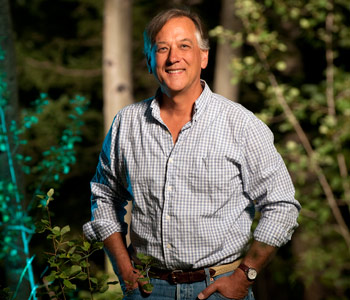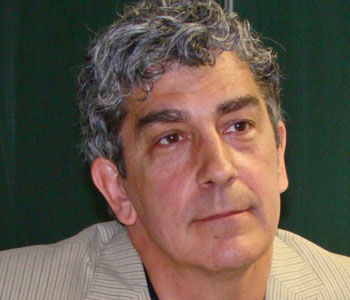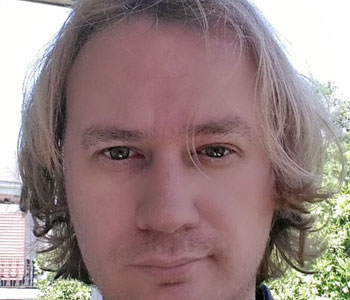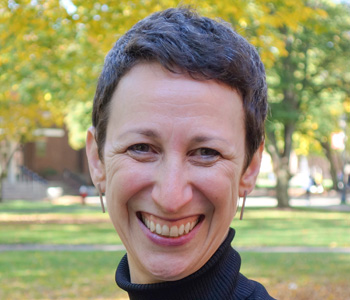Alan C. Braddock
Thomas Eakins and the Cultures of Modernity
University of California Press
304 pages, 10 x 7 inches
ISBN 978 0520255203
My book is about a historic change that occurred a century ago in the way people view human differences, illustrated through the work and life of a major artist. Today, we routinely use the word “cultures” to describe complex bodies of human behavior, or customs, formed by groups of people through social interaction over time. Nowadays, one’s “culture” is an important part of one’s identity. Because we recognize that any human being can potentially learn any human behavior, though, we also acknowledge that cultures are not etched in stone. Indeed, they can change, especially in our interconnected global community where people move frequently and communicate instantaneously.
Using the word “cultures” in this plural, changing sense only became widespread in the early twentieth century, after anthropologists Ruth Benedict and Margaret Mead (students of Franz Boas at Columbia) popularized the term in the 1920s and 1930s. Before then, most people viewed human group behavior differently. They saw the behavior of different groups as “natural”—ostensibly determined by “race,” impervious to change regardless of nationality, environment, gender, and class. Most educated people today view human groups more as evolving social entities, or “cultures.” Historians of anthropology consider the emergence of the concept of “cultures” in the twentieth century to be a major watershed, distinguishing modern from pre-modern ways of understanding human behavior. The modern concept of “cultures” has played a central role in challenging racism and biological determinism, because it acknowledges the fundamental capacity of all human beings to learn and exchange virtually any pattern of human behavior.
Thomas Eakins and the Cultures of Modernity situates an important American artist in relation to that watershed development. Whereas many art historians have attributed a modern perception of “cultures” to Eakins, my book demonstrates that the artist – who died in 1916 – did not use that term and could not have perceived human differences like a modern anthropologist. Rather, Eakins’s realistic portrayals of diverse groups of people – Spanish street performers, African Americans, southern European immigrants, Anglo-American scientists – embodied a pre-modern worldview, which confused “race” with social behavior. Yet, Eakins’s struggle to visualize human diversity amid the changing demographics and dislocating forces of his day – mass immigration, tourism, commercial publishing, and ethnographic museums – illuminates American art on the threshold of the twentieth-century concept of “cultures” in plural.

Whereas many art historians have attributed a modern perception of 'cultures' to Eakins, my book demonstrates that the artist – who died in 1916 – did not use that term and could not have perceived human differences like a modern anthropologist.
I was born in 1961 and raised in Iowa City, Iowa, the youngest of three children. My father was an English professor from New Jersey and my mother, a homemaker and university administrator, grew up on a farm in rural northwest Iowa. In their youth, my parents struggled economically through the Great Depression, an experience which very much shaped their worldviews in the direction of Democratic populism and liberal-humanism. As adults, my parents inculcated in all their children a version of those liberal, New Deal social values, along with the pluralist “cultural” attitudes outlined above, which had been popularized by the first generation of modern anthropologists in the early twentieth century. Having grown up near New York City in the 1920s and 30s and having studied American literature and education at Columbia University in the 1940s with help from the GI Bill, my father belonged to that generation of liberal-humanist intellectuals in an extended sense. My mother, whose father had emigrated to the U.S. from the Netherlands in 1921, was well-acquainted with both cultural difference and the forces of American assimilation. Despite the homogeneity of my own largely “white,” middle-class, Midwest university-town upbringing, I encountered some cultural diversity through regular family travels and through my parents’ supportive interactions with foreign and minority students and colleagues during my childhood, a period that coincided with the Civil Rights movement of the 1960s and early 1970s.
Indirectly, I think, Thomas Eakins and the Cultures of Modernity attempts to honor that family legacy while grappling with its limitations, which personal and professional experience have revealed to me over time. The limitations became apparent to me especially in graduate school. During the 1980s and the 1990s, at Johns Hopkins University and the University of Delaware, I encountered a host of new theoretical and political paradigms that challenged my received liberal-humanist worldview. In particular, European poststructuralism (or “Continental” philosophy) and postcolonial theory provided pretty strong medicine, forcing me to reckon with human difference in new ways that were far more critical and global in scope. I began to realize that cultural pluralism and civil rights were part of an ongoing international struggle against racism, imperialism, gender inequity, and the deleterious effects of extreme free-market capitalism.
Thomas Eakins and the Cultures of Modernity grew out of my doctoral dissertation at the University of Delaware. I basically argued that Eakins re-mapped the European orientalist-ethnographic approach of his French master, Jean-Léon Gérôme, a leading conservative painter at the École des Beaux-Arts in Paris, by applying it to American subjects around Philadelphia. Thus Eakins’s images of American black minstrels and white middle-class chess players became transposed versions of Gérôme’s pictures of Parisian street musicians and chess-playing Ottoman Turkish soldiers, confirming the American artist’s lifelong admiration for his French master as a kind of pictorial father figure. My dissertation drew inspiration from psychoanalytic theories about “displacement” and oedipal relations, which were current in academic poststructuralism and identity politics of the 1990s.
My dissertation project now seems narrow to me. In hindsight, it only scratched at the surface of a much deeper and more far-reaching historical phenomenon – the modern concept of “cultures” and its watershed emergence during the early twentieth century. To situate Eakins in relation to that epochal development eventually struck me as something much more consequential than psychological inquiry into his artistic relationship with a teacher/father figure. By reading more extensively in the history of anthropology, I came to realize that the African-American minstrels, Anglo-American chess players, and other domestic pictorial analogues that Eakins found for European orientalist types belonged to a much larger period discourse of human comparisons and social evolutionary thinking.
Then I read two recent books that had a galvanizing effect on me: Brad Evans’s Before Cultures: The Ethnographic Imagination in American Literature, 1865-1920 (published by the University of Chicago in 2005) and Kwame Anthony Appiah’s Cosmopolitanism: Ethics in a World of Strangers (W. W. Norton, 2006). Appiah confirmed for me the urgency of understanding a figure like Eakins in a global context; Evans solidified my understanding of the subtle – but nonetheless palpable – relationship between art (or literature) and anthropology during that watershed period.
I would like to highlight the subsections on “Indian Portraits” and “Zuni Perspectives,” in Chapter 3 (pages 191-212 in the book). On those pages, I discuss a remarkable 1895 portrait by Eakins depicting the anthropologist Frank Hamilton Cushing, who had spent 1879 to 1884 doing groundbreaking ethnographic fieldwork for the Smithsonian Institution at the Native American community of Zuni, an ancient pueblo in the New Mexico territory. In an unprecedented case of scientific immersion, Cushing became a member of the Zuni tribe by shedding his Anglo clothes, learning the native language, and going through a physically painful process of initiation (some have suggested he even killed a Navajo enemy as part of the process). Eventually, Cushing attained the status of a Zuni War Priest, which gave him intimate knowledge of tribal lore and social structures – information that he communicated to scientists in Washington, D.C. Typifying his complex persona, Cushing helped the Zuni fight unscrupulous Anglo real estate developers who wanted to steal their land, yet he himself stole sacred artifacts from tribal shrines without permission.
Although Cushing’s fascinating personal story is well known to historians of anthropology, the Eakins portrait provides an equally interesting artistic case study in the pre-modern perception of “cultures.” Eakins met Cushing in 1895 when the anthropologist happened to be in Philadelphia seeking medical attention at the University of Pennsylvania. The two men immediately became friends and set to work converting Eakins’s Philadelphia studio into a ceremonial Zuni kiva (a traditional private pueblo religious space), complete with wood-burning altar and other “authentic” paraphernalia. Cushing then dressed as a Zuni War Priest and posed for the artist, who later described the anthropologist as shown “performing an incantation” in the portrait.
Leveraging the aesthetic value of secret Native knowledge and artifacts, Eakins and Cushing conspired in performing a version of Zuni customs. But the resulting portrait was more a celebration of their professional achievement than a careful exploration of tribal “culture.” As I argue, their effort seems kind of funny and ridiculous on one level, but it also epitomizes the intrusive representation of Native American communities by pre-modern social-evolutionary artists and anthropologists. Compared to many Anglo-American professionals of their generation, Eakins and Cushing were tolerant about human diversity. They were sympathetic to people whose customs were different from their own. But Eakins and Cushing were a far cry from cultural anthropologists of our time in terms of sensitivity.
While I was doing research for my book back in 2004, I visited the Zuni myself and met with members of the tribal council to get their input about Eakins’s Cushing portrait. When I showed a reproduction of it, some rolled their eyes in disgust, explaining to me that Zuni War Priests are not supposed to parade private ceremonial knowledge so boastfully in public. From the council’s point of view, Eakins and Cushing had betrayed Zuni religious sanctity and thereby demonstrated a gross misunderstanding of tribal “culture.” I then asked the council if they would prefer that I omit a reproduction of the portrait from my book. Recognizing that censoring such images is very difficult today, they simply asked me to register their distaste for the portrait. So I did. As a way of providing another Zuni perspective, I reproduced a picture by the late twentieth-century Zuni artist, Phil Hughte, lampooning the self-aggrandizing tendencies of Cushing and, by extension, those of Eakins as well. In addition to providing a further example of Eakins’s pre-modern perspective, this section makes a case for approaching art history in a more ethical, interdisciplinary way.
I have tried to make this book speak to wider ethical and historical concerns beyond the discipline of art history, as it has typically been conceived. My book also speaks to the burgeoning fields of environmental history and “ecocriticism,” which are a new interest of mine. In Chapter 2, for example, I examine Eakins’s pictures of rowing and other aspects of outdoor aquatic life around Philadelphia in relation to the city’s water pollution crisis of the same period, which art historians had neglected until now.

Compared to many Anglo-American professionals of their generation, Eakins and Cushing were tolerant about human diversity. They were sympathetic to people whose customs were different from their own. But Eakins and Cushing were a far cry from cultural anthropologists of our time in terms of sensitivity.
Because Eakins is such a canonical figure in the history of American art, scholars have tended to treat him either hagiographically – as if he were a kind of saint. Or, more recently, some have been preoccupied with revealing sensational hidden truths about Eakins’s psychology and sexuality. My book avoids both hagiography and sensationalism by treating Eakins historically, specifically by inserting him into a number of previously overlooked material contexts, all of which illuminate his pre-modern understanding of “cultures.”




We don't put paywalls. We don't distract you with ads. We don't sell your data.
Please help to keep this running!